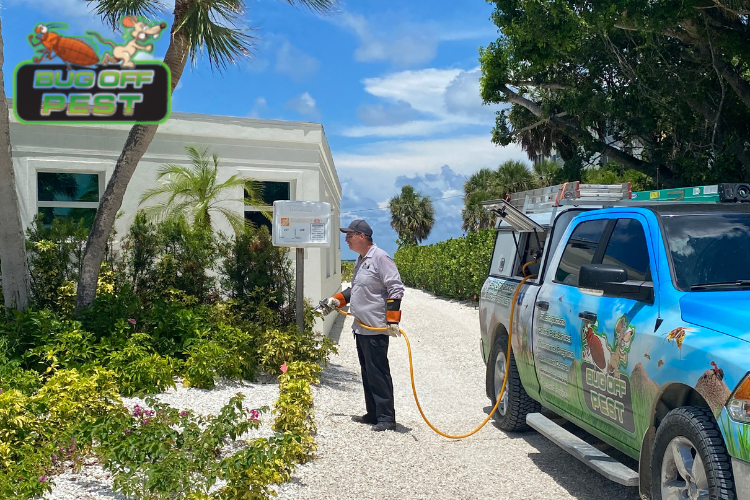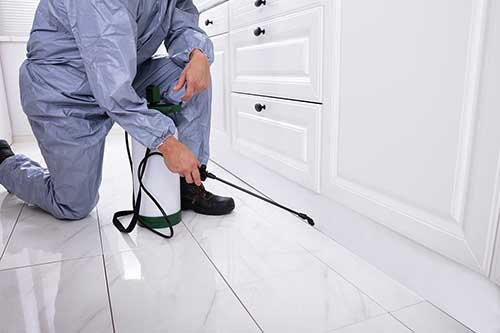Best Residential Pest Control Service in Port Charlotte
Best Residential Pest Control Service in Port Charlotte
Blog Article
Comprehensive Guide to Recognizing Insect Control Approaches and Their Treatment
Recognizing parasite control approaches is vital for effective management of undesirable organisms that pose threats to health and wellness, agriculture, and residential property. What aspects should be considered when selecting the suitable insect control method for a details situation?
Overview of Pest Control Methods
Parasite control techniques encompass a selection of strategies made to take care of and eliminate undesirable organisms that can harm human health, agriculture, and residential or commercial property. Reliable insect management is important for keeping the honesty of communities and making certain the safety and security of food materials. These techniques can be generally classified right into three key methods: cultural, mechanical, and organic controls.

Social control entails modifying farming methods or ecological conditions to reduce insect establishment and recreation. This strategy includes crop rotation, sanitation, and selecting pest-resistant plant ranges. Mechanical control relies upon physical obstacles or tools to stop pest accessibility or straight eliminate them. Instances consist of catches, webs, and hand-picking dangerous bugs.
Biological control makes use of all-natural killers, bloodsuckers, or microorganisms to manage pest populaces. This approach highlights environmental balance and can consist of introducing useful bugs, such as ladybugs or predacious nematodes, to manage insect presence.
Integrated insect management (IPM) combines these approaches, making use of a holistic strategy that highlights prevention, surveillance, and responsible management. By using a blend of these approaches, bug control can be much more lasting and effective, lessening reliance on chemical treatments while protecting human wellness and the environment.

Chemical Pest Control Solutions
A selection of chemical pest control options are available, supplying reliable choices for managing insect populaces when other techniques might fall brief. These remedies mainly consist of pesticides, herbicides, fungicides, and rodenticides, each developed to target certain bugs while minimizing damage to non-target microorganisms.
Pesticides are especially reliable versus a range of bugs, consisting of ants, cockroaches, and termites, and can be identified as call or systemic agents. Contact insecticides kill parasites on contact, while systemic insecticides are absorbed by plants, making them harmful to bugs that prey on them. Herbicides are utilized to control unwanted greenery, whereas fungicides are important for managing fungal illness that can harm plants and decorative plants.
Rodenticides, created for rodent control, are offered in numerous solutions, consisting of lures and tracking powders. It is critical to follow tag instructions meticulously to ensure safety and efficacy. In addition, incorporated parasite monitoring (IPM) concepts must be utilized, combining chemical services with cultural, mechanical, and biological techniques for sustainable pest control. This alternative method not only enhances pest monitoring performance but likewise reduces potential ecological effects associated with chemical usage.
Organic Insect Control Strategies
Organic bug control techniques offer an eco friendly alternative to chemical methods by using natural killers, parasites, or i loved this microorganisms to manage pest populations. This approach leverages the eco-friendly relationships in between article organisms, promoting a well balanced environment while minimizing chemical deposit in the atmosphere.
One of the most usual organic control techniques includes the introduction of natural adversaries. For example, ladybugs are employed to manage aphid populations, while parasitical wasps can target caterpillars and other insects. These natural predators efficiently minimize pest numbers without harming beneficial bugs.
In addition, microbial agents such as germs, fungi, and viruses are made use of to infect and eliminate certain insects. Bacillus thuringiensis (Bt), a normally occurring bacterium, is extensively utilized to regulate caterpillars and various other larvae, showcasing the effectiveness of microbial insect control.

Physical and Mechanical Methods
Frequently used in incorporated pest administration techniques, physical and mechanical methods act as efficient devices for controlling insect populaces without the use of chemicals. These methods rely upon physical barriers, catches, and other mechanical tools to stop or remove bugs, making them eco pleasant options.
Physical approaches include making use of obstacles such as insect netting, screens, or row covers that literally obstruct his comment is here insects from accessing plants. This is specifically useful in farming settings where crop security is necessary. In addition, habitat manipulation, such as removing debris and standing water, can reduce pest breeding websites, thus reducing problems.
Mechanical methods incorporate catches, which can be created to capture specific bugs. Sticky traps and pheromone catches prevail instances that tempt and maintain bugs, promoting surveillance and control. Vacuuming is another mechanical strategy, reliable for eliminating parasites from indoor environments, specifically in situations of problems.
Preventative Bug Management Techniques
Effective preventative pest monitoring techniques are important for maintaining healthy environments and minimizing pest-related issues before they emerge (Pest Control in Port Charlotte, FL). These approaches concentrate on aggressive steps that reduce the possibility of bug infestations by dealing with the source

An additional essential method entails correct landscaping practices (Pest Control in Port Charlotte, FL). Keeping greenery trimmed and away from buildings can minimize harborage locations for bugs. Carrying out incorporated bug management (IPM) strategies that consist of monitoring insect populaces and employing biological controls can foster a balanced ecosystem that naturally suppresses pest numbers.
Education and training for personnel and citizens on acknowledging early indications of insect task are likewise key elements of an effective preventative program. By fostering an environment of understanding and vigilance, organizations and homeowners can significantly improve their insect monitoring initiatives and safeguard their rooms versus future infestations.
Final Thought
Finally, reliable parasite control calls for a multifaceted method that integrates chemical, biological, and mechanical approaches. Utilizing an Integrated Insect Administration (IPM) framework enables the lasting monitoring of insects while reducing eco-friendly impact. Preventative methods further enhance the efficacy of these methods, making sure lasting security of health, farming, and residential property. Inevitably, a thorough understanding of these diverse pest control techniques is necessary for attaining successful results in parasite administration efforts.
Report this page